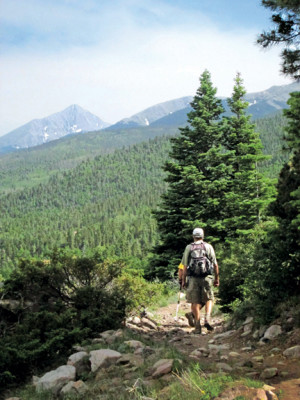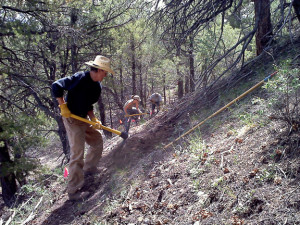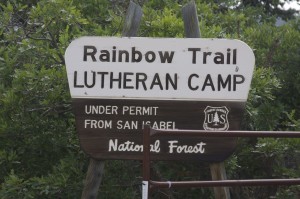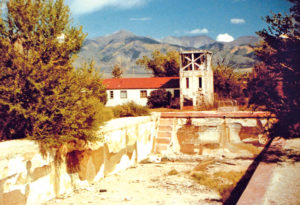By Tina Mitchell
Wildfire and wildlife – what’s the first image that comes to your mind? I’m seven years old, sitting in a darkened movie theater, watching the fire scene in the Disney animated classic Bambi. Birds, squirrels, rabbits, raccoons and our protagonist deer all flee through scorching embers, swirling smoke, and crashing, flaming branches. That scene seemed to last for hours, although it likely wrapped up in about three minutes. But more than 55 years later, I remember how scared that little girl felt as clearly as if I had just left the theater.
But if you watch that scene again, you’ll see that it ends well. Many animals make their way to a place of safety. And, in fact, such an ending is likely for much of the non-cartoon wildlife that find themselves in wildfires, too. As noted by a Colorado Parks and Wildlife officer, animals that can run, run. Those that can fly, fly. Those that can burrow, burrow. Some observers have reported that large mammals can even appear amazingly calm in surprisingly close proximity to flames. For example, during the massive fires in Yellowstone National Park in 1988, bison, elk, and deer were seen resting and grazing within 100 yards of torching trees. Many mammals such as mice and voles use underground tunnels and spaces under rocks to escape the worst of the fire. Those that construct surface-level nests, such as woodrats, are more vulnerable because their nests are made of dry, flammable grasses and twigs.
Chipmunks, which rely on live trees more than many other rodents do, generally leave a burned area and don’t return until new-growth trees reach sufficient size to provide appropriate food and shelter. Mortality among adult birds is typically low, although if a fire strikes during nesting season, the young – especially of those birds that nest on the ground or low shrubs – are likely to die. Birds that nest high in the trees may lose clutches during crowning fires. However, such fires in the past have been more common in late summer, after breeding season has ended. But many species of birds nest again if something happens to a clutch, whether through natural disaster or depredation. And some species – especially Hairy and American Three-toed Woodpeckers – actually seek out burn areas because of the abundance of insects found in the dead trees.
Of course, wildfires do kill some animals. Even large mammals can have difficulty escaping wide, fast-moving flames or fires that leap voraciously across the tops of trees. The majority of the large mammals that died in the Yellowstone fires succumbed to smoke inhalation due to thick ground smoke. But populations of most species as a whole are, at worst, only temporarily affected by wildfires. Such impacts arise not so much from widespread deaths but through changes in food and nesting and shelter options. Research has shown that numbers and diversity of both large and small mammals, as well as birds, often dropped for the first year or so following a major fire. Even in very extensive fires, though, pockets of habitat remain untouched throughout the charred landscape. And areas that do burn often recover quickly, producing stronger, nutrient-rich forage of grasses and forbs soon after a fire, and grazing animals move back in quickly. By about seven years postfire, levels of wildlife density and diversity tend to be indistinguishable from those in similar habitats that experienced no fire.
Fish, though, can suffer long-lasting impacts from wildfires. Airdrops of fire-retardant slurry generally avoid waterways. But sometimes slurry inadvertently finds its way into streams and creeks. Debris and ash can end up in creeks and rivers, clogging the gills of the fish and generally polluting the waters. As we’ve been seeing recently in the Waldo Canyon burn area, rains can send debris, ash, soot and mud cascading into streams and rivers months – even years – afterward, in the absence of the anchoring cover of grasses and shrubs. Parks and Wildlife officers work to mitigate any harms and fish can be restocked from Colorado’s fish hatcheries. But the impacts of fire on the riparian habitats of fish can endure.
Wildlife have lived with wildfire for centuries. Survivors will adapt in many ways. Some will move away permanently to areas that provide appropriate food and shelter. Others will return surprisingly quickly. Still others will return slowly over time. But even as the humans still reel from the shock, devastation and heartbreak, most wildlife have already started to adapt to their new surroundings.
Tina Mitchell watches nature with her human and canine family from their perch in the piñon/juniper habitat of western Fremont County. When she needs to pay the bills, she shows up as a research psychologist on the University of Colorado Anschutz Medical Campus in Aurora.





